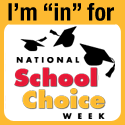Media
Bill Cosby Explains How to Really Educate a Child
 We're in the middle of National School Choice Week, which means the word “education” is hot on the lips of its advocates across our state and country. Schooling is a concern of the Pennsylvania Senate Democratic Caucus, too, as Sen. Jay Costa (D-Allegheny) claimed today: “Education funding has been driven back to 2006 levels. We are no longer investing in education.”
We're in the middle of National School Choice Week, which means the word “education” is hot on the lips of its advocates across our state and country. Schooling is a concern of the Pennsylvania Senate Democratic Caucus, too, as Sen. Jay Costa (D-Allegheny) claimed today: “Education funding has been driven back to 2006 levels. We are no longer investing in education.”
Hold up, Senator. Public education funding in Pennsylvania has doubled in the last 15 years to $26 billion a year. Meanwhile, public schools have added nearly 36,000 employees—all while student enrollment has declined by almost the same number.
While funding has skyrocketed, student performance has largely stagnated. About 82,000 students suffer the worst of it, trapped in the commonwealth's persistently failing schools, where some two-thirds cannot read or do math at grade level. The problem isn't a lack of education funding—it's a public education system that lacks incentives to improve. And that's why school choice has attracted supporters from across the political spectrum.
Recently, Sen. Anthony Williams (D-Phila.) noted that increases in funding for some school districts don't necessarily reach the classroom: “Spending more money doesn't result in spending more money on teaching the child.”
In the end, we should measure the effectiveness of American—and Pennsylvanian—public education by whether our children learn and are equipped to compete for jobs in an increasingly competitive world. School choice restores the responsibility to parents and teachers for educating children, and forces public schools to improve as they compete with charter, cyber and private schools. That's an investment in education worth making.